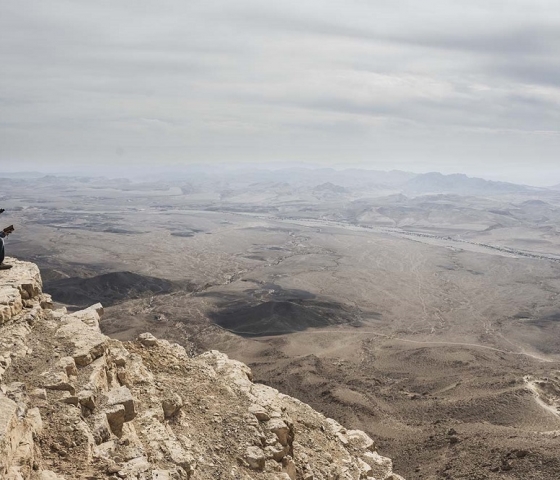Karel Cudlín: Generace pouště x.0
The area called the Negev (translated as "dry") occupies more than half of the territory of today's state of Israel. It is a geomorphologically diverse area stretching between the Sahara and the Arabian desert. Hundreds of millions of years ago there used to be an ocean floor, which is still visible today in the structure of the local rock formations. The rugged, mostly stony terrain, which turns into a partly sandy desert with sporadic dunes towards Sinai, is also diverse in terms of different microclimates and vegetation. The appearance of plants, but also the paths of animals, are determined by the ability of the earth to retain moisture. During the winter season, which lasts roughly from the end of November to the beginning of February, flash floods inundate the deep wadis, but the water is usually lost as quickly as it appeared. It leaves behind empty shells and plants whose resilience inspires traditional medicine as much as modern science.
Although the Negev was directly hit by a brutal attack by Hamas terrorists on its western edge on October 7 of last year, and a number of kibbutzim in the immediate vicinity of the border with Gaza remain depopulated, life has not stopped in the south of Israel, just like in the rest of the country. The pictures of the leading Czech photo-documentary artist Karel Cudlín, who, as the only Czech photographer, has been consistently devoted to the transformation of Israeli society from the Golan to the Sinai for thirty years provide fresh evidence of this. In the last two years, he has focused his attention on an area that until recently was on the fringes of interest, but which has been changing significantly in recent decades not only thanks to the exceptional development of science, research and innovation in the style of a start-up nation.
The exhibition will present a different view of Israel than what current news offers to the public. The selection includes images from the last three trips to the Negev, during which Karel Cudlín focused not only on the diverse face and transformations of the desert, but above all on the life of the contemporary communities that live in it today. The author of the concept is curator Míša Sidenberg, who accompanies the photographer on his travels.
Karel Cudlín (*1960) is one of the photographers following the tradition of classic humanistic photography that developed from the middle of the 20th century, but street photography, photographic snapshots and other broad spectrum photographic approaches are also present in his work. At the same time, he has a strong visual sense, which makes the selected images into unique visual events.
Similar to previous years with photography exhibitions during the festival, we will exhibit a selected part of the images directly in the public space (in 2023 it was the fence of the castle bordering the Jewish quarter, in 2024 most likely a narrow alley – backyards, passages, leading from the Jewish quarter to square).
Museum Boskovicka, synagogue, meeting with autor July 5, 1 pm

